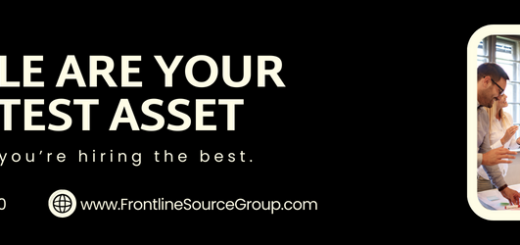Beyond the New Resume: Evaluating Cultural Alignment in Executive Candidates
The Value of Cultural Alignment in Executive Hiring In the fast-paced business world of today, the importance of cultural alignment in executive hiring cannot be emphasized enough. My experience navigating the intricacies of organizational dynamics has led me to believe that hiring an executive who aligns with the company’s culture is just as important as their credentials. An executive is more likely to create a harmonious workplace, encourage employee engagement, and improve overall performance when they live up to the organization’s core values & beliefs. In addition to facilitating easier communication, this alignment guarantees that strategic choices are in line with the mission and vision of the business. Also, employee retention rates can be greatly impacted by cultural alignment. We are currently hiring for various positions in our company.
Key Takeaways
- Cultural alignment in executive hiring is crucial for the success and longevity of an organization.
- Identifying and understanding the cultural values and beliefs within an organization is essential for finding the right executive fit.
- Assessing executive candidates for cultural fit involves evaluating their values, beliefs, and work style to ensure compatibility with the organization’s culture.
- Behavioral interviewing plays a key role in evaluating cultural alignment by assessing how candidates have handled situations in the past and how they would approach similar scenarios in the new role.
- Utilizing assessment tools can provide valuable insights into a candidate’s cultural compatibility and help make more informed hiring decisions.
I’ve noticed that when leaders have the same values as their teams, it fosters a feeling of trust and community among staff members. Establishing a positive work environment where people feel appreciated and inspired to put forth their best efforts requires this trust. Employing an executive who does not fit with the company culture, on the other hand, may cause conflict, lower morale, and eventually higher turnover rates. As a result, giving cultural fit top priority during the hiring process is not just a matter of taste; it is a calculated requirement for sustained success. Finding the fundamental principles and values that characterize an organization’s culture is essential to successfully integrating executives with it.
I’ve discovered that this process frequently starts with reflection & discussion between current management & staff. By having candid conversations about the organization’s values, I can learn the fundamental ideas that underpin behavior and decision-making inside the business. Explicit values like creativity & teamwork are frequently revealed by this investigation, as are implicit beliefs that may not be formally expressed but have a significant impact. Also, I’ve discovered that obtaining opinions from a wider variety of workers can be greatly aided by holding focus groups or surveys.
With the use of these tools, I am able to document a variety of viewpoints regarding the aspects of the organization’s culture that are most valued. I can develop a thorough understanding of the company culture by combining this data, which will be the basis for assessing possible executive candidates. The hiring process and future initiatives aimed at strengthening and changing the organizational culture are both aided by an understanding of these cultural values.
Assessing executive candidates for cultural fit comes next, after I have a firm grasp of the organization’s values. This evaluation involves more than just analyzing their technical proficiency and experience; it also takes into account how well they fit with the stated values and beliefs. I usually start this process by creating a set of standards based on the culture of the company, which people can use to compare applicants. I listen carefully to candidates’ answers when they are asked about their leadership style, decision-making procedures, and prior experiences during interviews. Candidates who show a sincere comprehension of and dedication to comparable cultural values have a higher chance of succeeding in the company, in my opinion.
I also take into account their capacity to change with the times while upholding their basic values. This flexibility is essential in the dynamic business environment of today, where executives must overcome obstacles while staying in line with company culture. In my quest to assess executive candidates’ cultural fit, behavioral interviewing has proven to be a crucial tool. This method aims to reveal candidates’ values and behaviors by analyzing how they have responded to particular circumstances in the past. I can more accurately assess a candidate’s fit with the company culture by asking questions that encourage them to share examples of their experiences from real life than I can by using conventional interview techniques.
For example, when I ask candidates to share a time when they encountered a major team dynamics challenge, their answers show not only how well they solve problems but also how they collaborate and communicate. I look for signs that they value respect, openness, and inclusivity—values that are frequently essential to a positive corporate culture. I am better able to determine whether a candidate will flourish in the current cultural framework by examining these behavioral patterns. I’ve discovered that using assessment tools in conjunction with behavioral interviewing can improve my capacity to gauge executive candidates’ cultural fit.
A variety of personality tests & psychometric evaluations can offer insightful information about a person’s characteristics, driving forces, and working methods. I can better understand how candidates might interact with current team members and fit into the organizational culture thanks to these tools. In order to understand how a candidate will handle interpersonal relationships within the company, for instance, tests that measure emotional intelligence can be especially instructive. Strong leadership abilities and the capacity to cultivate a positive work environment are frequently associated with high emotional intelligence—qualities that are critical for cultural alignment.
By incorporating these evaluation tools into my hiring procedure, I can obtain a more comprehensive understanding of each applicant’s possible organizational fit. For new executives, an efficient onboarding process is essential. taking in the culture of the organization. The goal of an executive’s onboarding process is to immerse them in the company’s culture from the very beginning, not just to acquaint them with policies and procedures.
I create an extensive onboarding program that offers mentorship opportunities with current leaders who exemplify the organization’s values in order to facilitate this integration. establishing trust and relationships. I urge new executives to interact with staff members at all organizational levels through casual get-togethers and team-building exercises.
They can establish rapport and learn about the daily struggles of their teams through these exchanges. I assist new leaders in building credibility & trust within the company by cultivating these relationships early on. This is crucial for effective leadership and cultural alignment.
building trust and credibility. By fostering these relationships, new leaders can build the organization’s credibility and trust—two things that are critical for both cultural alignment and effective leadership. Evaluating cultural alignment has its difficulties and traps, even with my best efforts. I frequently run into the problem of unconscious & conscious biases influencing hiring decisions.
By using structured evaluation procedures and including a range of stakeholders in the decision-making process, it is imperative that I continue to be on the lookout for these biases. I can reduce the possibility of choosing applicants purely on the basis of their personal preferences rather than impartial evaluations of cultural fit by doing this. The dynamic nature of organizational culture itself presents another difficulty. Companies’ cultures may change as they develop & adjust to shifting market conditions.
I must understand that as the company expands or changes course, what might have once been a strong cultural fit may no longer be the case. As a result, I have to be adaptable and receptive during the hiring process, constantly evaluating the culture of the company & the changing demands of its executives. Cultural misalignment can have serious, long-lasting effects. Based on my observations, companies that do not give cultural fit top priority when hiring executives frequently see a decline in employee engagement and morale. Leaders who fail to live up to the company’s values cause employees to become confused about their responsibilities and lose their sense of purpose in the workplace.
Moreover, poor decision-making and strategic errors can result from cultural misalignment. Employees may find it difficult to relate to or understand the needs of executives who do not share the same values as the company, which could lead to initiatives that do not have team support or buy-in. Innovation and growth may eventually be impeded by this disconnect, making it more difficult for a company to adjust to shifting market demands.
In summary, creating a cohesive workplace & promoting organizational success require giving cultural alignment top priority when hiring executives. Through the identification of core values, careful candidate evaluation, efficient interviewing methods, and the implementation of strong onboarding plans, I can make sure that new leaders are prepared to make a valuable contribution to the culture of the company. Even though there might be obstacles in my path, I will be able to make wise decisions that benefit executives and staff alike if I continue to be aware of biases and adjust to changing cultural dynamics. Ultimately, understanding how cultural alignment affects performance will direct my efforts in creating capable leadership teams that help organizations achieve their objectives.
In a recent article on CEO Blog, the importance of cultural alignment in executive candidates was highlighted in “Day 3: CEO Undercover Uber Project.” This article delves into the undercover project of a CEO at Uber, emphasizing the significance of evaluating cultural fit when hiring top-level executives. It further reinforces the idea that beyond just looking at a candidate’s resume, understanding their values and alignment with the company’s culture is crucial for long-term success. To read more about this insightful perspective, check out the article here.
FAQs
What is cultural alignment in executive candidates?
Cultural alignment in executive candidates refers to the degree to which a candidate’s values, beliefs, and behaviors align with those of the organization they are applying to join. It encompasses factors such as leadership style, communication style, decision-making approach, and overall fit within the company’s culture.
Why is evaluating cultural alignment important in executive candidates?
Evaluating cultural alignment in executive candidates is important because it helps ensure that the candidate will be able to effectively lead and work within the organization. A strong cultural fit can lead to higher job satisfaction, better performance, and longer retention of executive talent.
How can cultural alignment be evaluated in executive candidates?
Cultural alignment can be evaluated in executive candidates through various methods, including behavioral interviews, assessment tools, reference checks, and observing the candidate’s interactions with current employees. It is important to assess not only the candidate’s skills and experience, but also their values, attitudes, and work style.
What are the benefits of hiring executives who are culturally aligned with the organization?
Hiring executives who are culturally aligned with the organization can lead to improved employee morale, better teamwork, and a more cohesive organizational culture. It can also result in more effective leadership, better decision-making, and ultimately, improved business performance.
What are the potential challenges in evaluating cultural alignment in executive candidates?
One potential challenge in evaluating cultural alignment in executive candidates is the subjective nature of cultural fit assessment. It can be difficult to objectively measure and compare a candidate’s cultural alignment with that of the organization. Additionally, biases and assumptions about cultural fit can impact the evaluation process.





